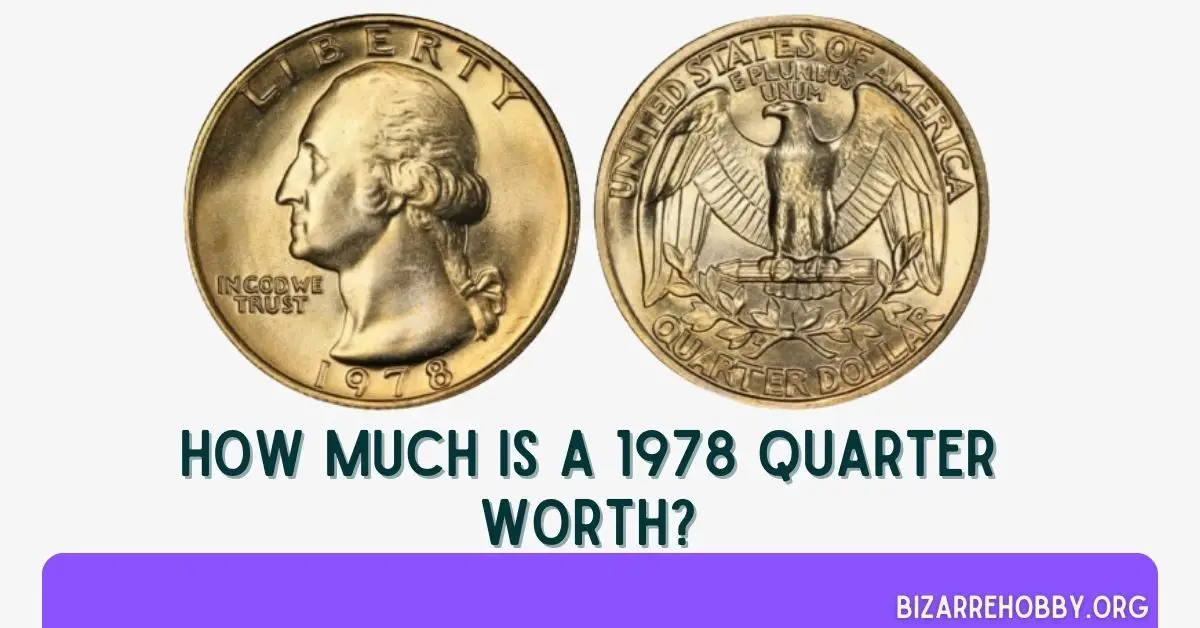The Washington quarter began as a commemorative coin in 1932, intended to honor the 200th anniversary of George Washington’s birth. Originally planned as a one-year issue, its popularity led to continued minting from 1934 onward. George Washington became only the second U.S. President to be featured on the obverse of an American coin. This design remained largely unchanged until 1998, although the coin’s metal composition was altered in 1965. While the value of the 1978 quarter may seem modest today, these coins still hold collectible potential, particularly as their historical significance grows over time.
Value Chart for 1978 Quarter
| Condition | 1978 No Mint Mark Quarter | 1978 D Quarter | 1978 S Quarter |
|---|---|---|---|
| MS 65 | $6.81 | $6.81 | – |
| PR 65 | – | – | $5.84 |
History of 1978 Quarter
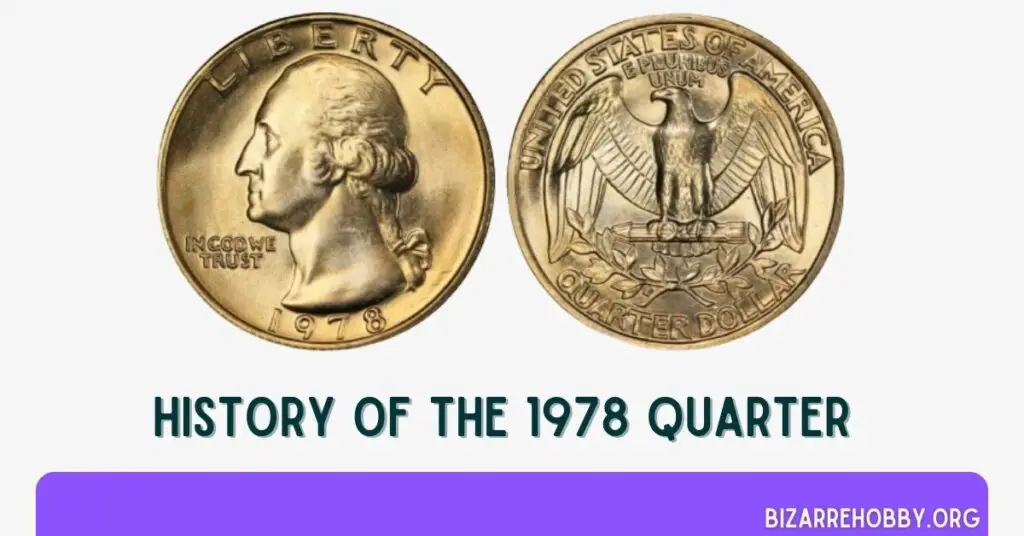
The Washington quarter made its debut in 1932 as a special commemorative issue, marking the bicentennial of George Washington’s birth. Initially, the idea was to use a half-dollar coin for the commemoration, but the quarter was ultimately chosen for its more frequent use in daily transactions. This decision was cemented, making Washington’s likeness a permanent feature on the quarter.
Preparations for this coin began as early as 1924, with the establishment of the George Washington Bicentennial Commission by Congress. However, progress was slow, and the commission was restructured in 1929 to accelerate the project. In search of a new design, Congress launched a competition that drew over 100 submissions from 98 sculptors.
Laura G. Fraser’s design was initially selected, but it was ultimately rejected by Treasury Secretary Andrew Mellon, who preferred John Flanagan’s work. Despite some controversy and pushback, Flanagan’s design was finalized and remains iconic to this day.
Flanagan’s design, though simple, was well-suited to mass production. Its low-relief features allowed for efficient minting with a single strike, although this did lead to some wear and tear on the dies, requiring occasional updates to the master hub. Flanagan’s obverse was based on a bust of George Washington created by the French sculptor Jean-Antoine Houdon in 1785, a piece that Washington himself posed for at his Mount Vernon estate.
1978 Washington Quarter Types
| Location | Year | Minted |
|---|---|---|
| Philadelphia | 1978 No Mint Mark quarter | 521,452,000 |
| Denver | 1978 D quarter | 287,373,152 |
| San Francisco | 1978 S quarter (proof) | 3,127,781 |
| Total | – | 811,952,933 |
Design of the 1978 Washington Quarter
The 1978 Washington Quarter, like its predecessors, is a durable and widely circulated coin. Although the design has remained remarkably consistent since its introduction in 1932, featuring the iconic image of George Washington on the obverse, changes over the years have been minimal compared to other American coins. While most 1978 quarters show signs of wear due to circulation, collectors primarily seek out those in mint condition for their collections.
Obverse Design of 1978 Quarter
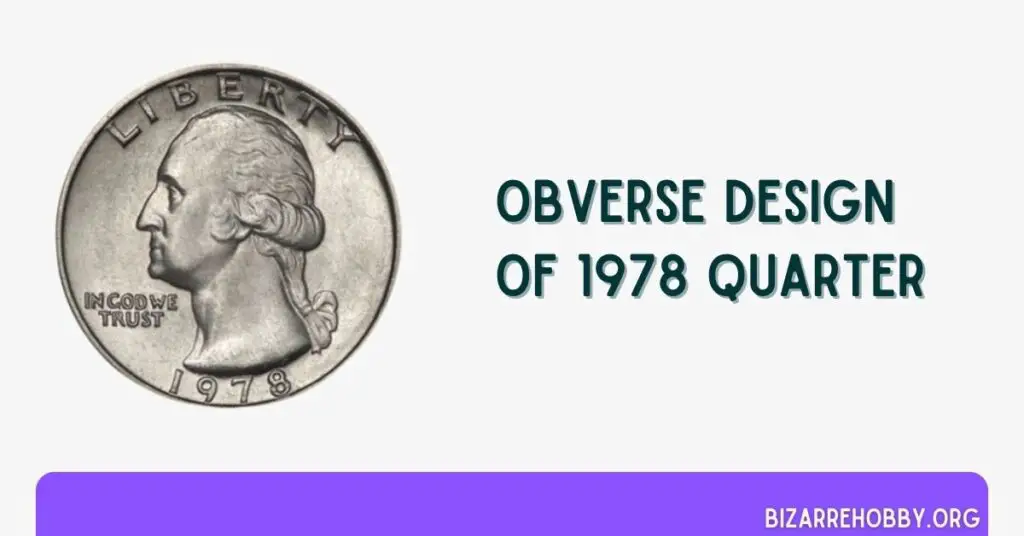
The obverse of the 1978 Washington Quarter showcases a profile portrait of George Washington, the first U.S. President and a pivotal Founding Father. Washington’s bust is centrally positioned, with his profile facing left. The design is straightforward, with intricate details visible in his curly hair and the bow-tied ponytail.
This side of the coin features three key inscriptions. At the top, the word LIBERTY is arched along the upper rim. The phrase IN GOD WE TRUST is located to the left, just below Washington’s chin. The minting year 1978 is prominently displayed along the lower rim.
Some quarters also feature a mint mark positioned behind Washington’s lower neck near the bow. This mark identifies the specific mint where the coin was produced.
Reverse Design of 1978 Quarter
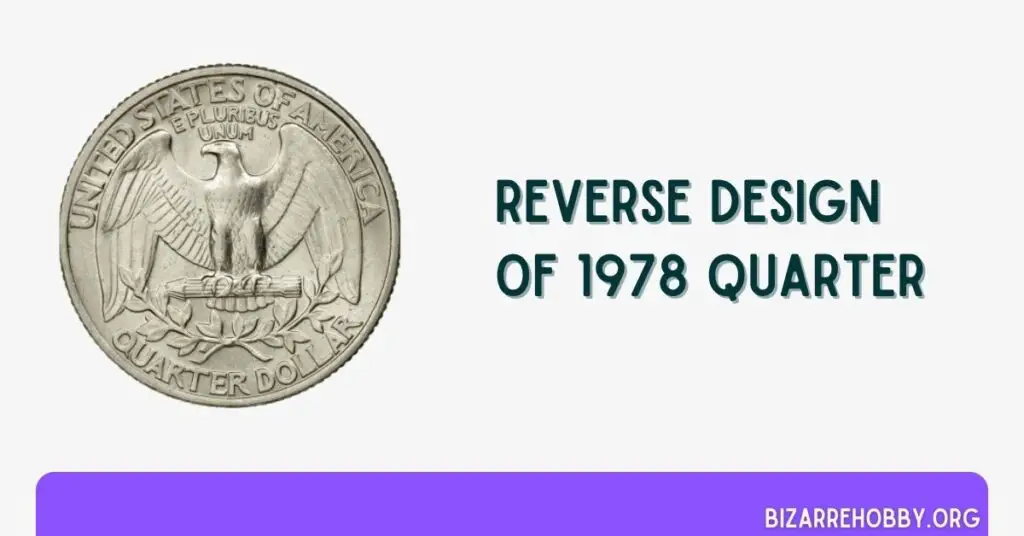
The reverse of the 1978 Washington Quarter is rich in symbolism, reflecting the values and heritage of the United States. Dominating the reverse is the American Bald Eagle, depicted with wings spread wide. The eagle’s body faces forward, but its gaze is turned left, symbolizing vigilance. In its talons, the eagle clutches a bundle of arrows, while two olive branches extend beneath, representing peace.
Along the top rim of the coin is the inscription UNITED STATES OF AMERICA. Directly below this is the national motto, E PLURIBUS UNUM. The denomination, QUARTER DOLLAR, is inscribed along the lower rim, just beneath the olive branches.
Technical Specifications of 1978 Washington Quarter
| Face value | 25 cents ($0.25) |
| Compound | Copper (75%) and nickel (25%) with a clad core |
| Coin diameter | 0.9551 inches (24.26 mm) |
| Coin thickness | 0.06889 inches (1.75 mm) |
| Coin weight | 0.20 ounces (5.67 g) |
| Shape | Round |
| Edge | Reeded |
Grading a 1978 Washington Quarter
Coin grading experts typically use the Sheldon scale, which ranks coins from 1 to 70, with 70 representing a coin in perfect condition. Graders evaluate several aspects, including the coin’s overall appearance, wear, and any signs of damage. Additionally, they assess factors like the coin’s condition, color, luster, and the presence of any errors.
For collectors, understanding the grade of a coin is crucial in determining its value. Be sure to consult our comprehensive grading guides to accurately assess your 1978 Washington Quarter. Knowing the grade will help you determine its exact worth.
| Sheldon Scale | Grade |
|---|---|
| 1 | Basal State-1 |
| 2 | Fair |
| 3 | Very Fair |
| 4, 5, 6 | Good |
| 7, 8, 10 | Very Good |
| 12, 15 | Fine |
| 20, 30 | Very Fine |
| 40 | Extremely Fine |
| 50 | About Uncirculated |
| 60 | Mint State |
| 65 | Mint State |
| 70 | Mint State |
1978 Washington Quarter Value Guides
The 1978 Washington Quarter was struck at three different mints, producing a total mintage of 811,952,933 coins. These coins were made in high quantities, so many of them remain in circulation today, often displaying visible signs of wear. Below is a guide to the value of these quarters based on their mint mark and condition.
1978 No Mint Mark Quarter Value
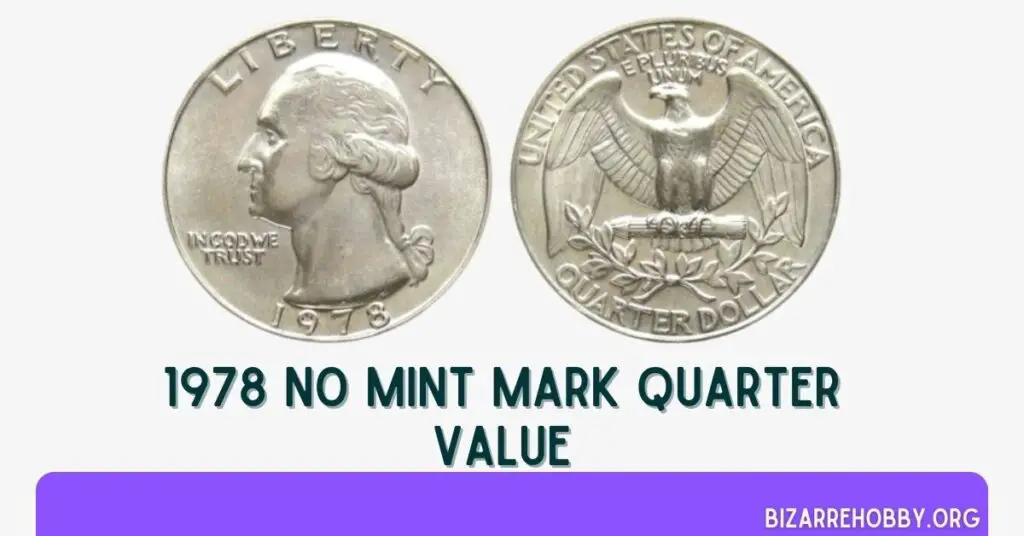
The 1978 Washington Quarter with no mint mark was struck at the Philadelphia Mint, producing 521,452,000 quarters—nearly two-thirds of the total mintage that year. Because of this large production, these coins are easily found in circulation and are generally worth their face value of $0.25.
For collectors, the value increases slightly for quarters in mint condition:
- MS 60 to MS 65: $1 to $22
- MS 66: $32
- MS 67: $225
1978 D Washington Quarter Value
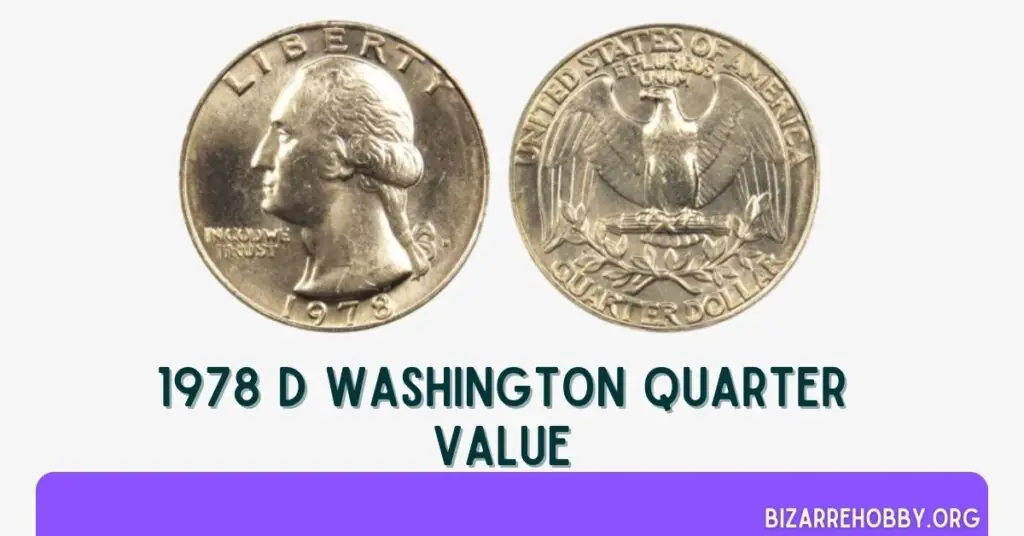
The Denver Mint produced 287,373,152 of the 1978 Washington Quarters, marked with a “D”. Like the Philadelphia quarters, these coins are abundant and often remain in circulation, usually valued at their face value unless in mint condition:
- MS 60 to MS 65: Up to $1
- MS 66: $32
- MS 67: $240
1978 S Quarter Value (Proof)
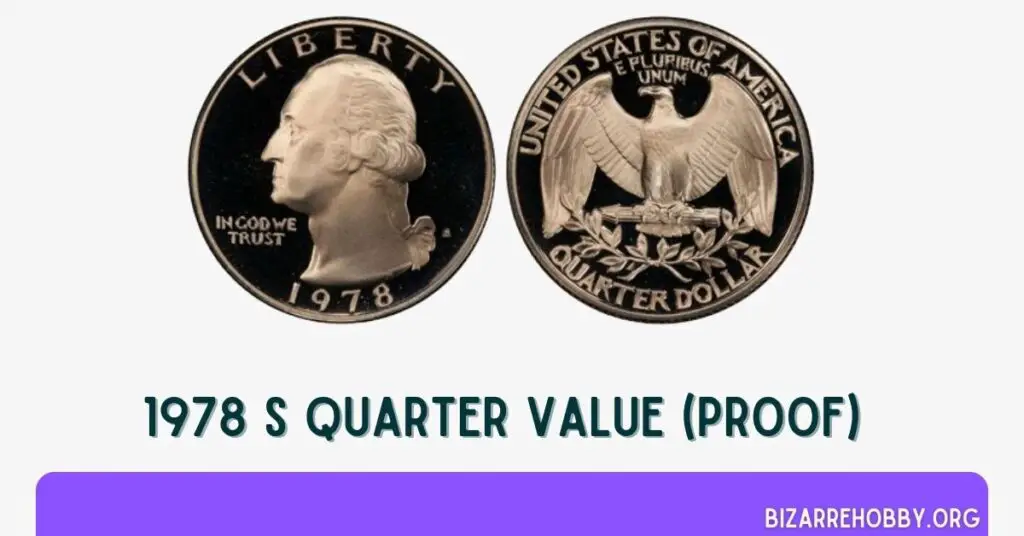
The San Francisco Mint struck 3,127,781 proof quarters in 1978, identified by an “S” mint mark. Proof coins are specially made for collectors, featuring a higher level of detail and a mirror-like finish. The value of these proof coins depends on their condition:
- PR 67 DCAM: $6
- PR 68 DCAM: $7
- PR 69 DCAM: $13
- PR 70 DCAM: $42
Rare 1978 Washington Quarter Error List
Error coins are a fascinating aspect of numismatics, often commanding significantly higher values than their regular counterparts. The 1978 Washington Quarter, with a massive mintage of over 800 million, has its fair share of errors. Here’s a rundown of some notable 1978 quarter errors and their potential values:
1978 Quarter Off-Center Error
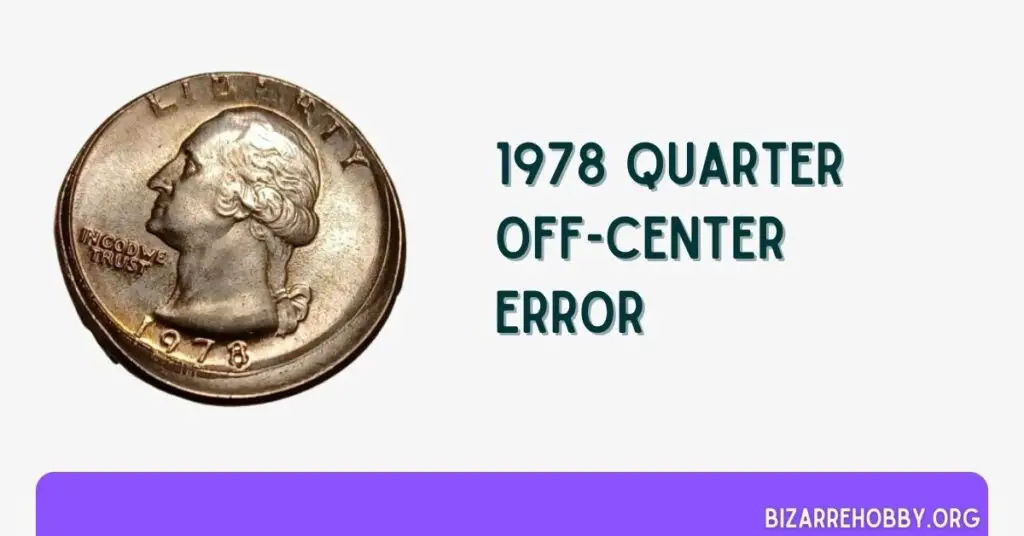
An off-center error occurs when the coin is struck outside of its center due to improper alignment of the die. This results in a partial design on the coin. The value of these errors typically increases with the percentage of the design that is missing:
- 15% Off-Center, MS 66: Approximately $45
- 50% Off-Center with visible date: Over $250
1978 Quarter Strike Off-Center with a Double Struck Error
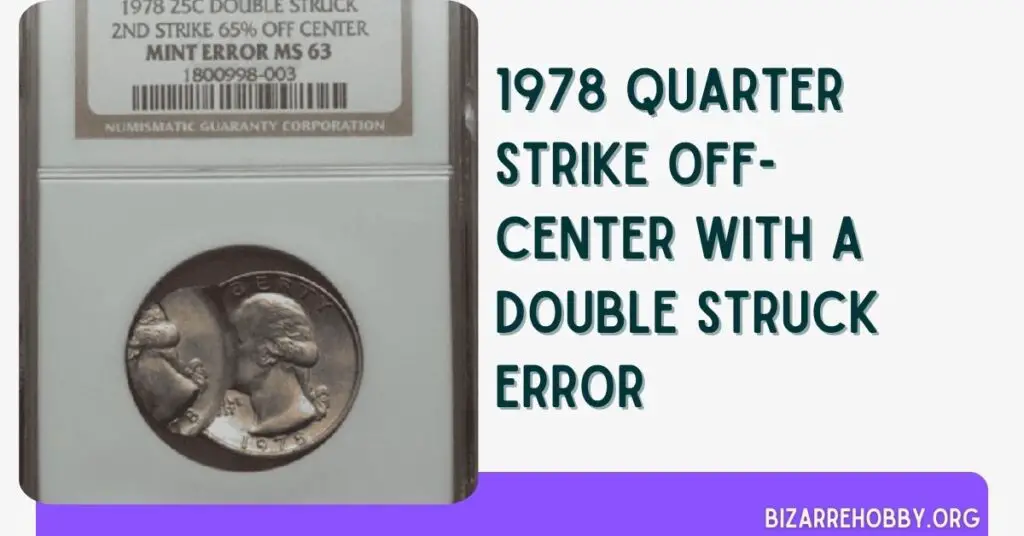
This rare and unusual error involves both a double strike and an off-center strike. The design appears significantly off-center during the second strike, often resulting in an oddly shaped coin. This type of error is highly sought after by collectors, with some examples being particularly valuable due to their uniqueness.
1978 Quarter Rotated Double Struck Error
A rotated double strike error occurs when a coin is struck twice by the die, with a slight rotation between strikes. This results in a doubling of the design that overlaps in a way that makes it difficult to distinguish the second image. These coins can be quite valuable, often fetching:
- Rotated Double Strike: Over $170 at auction
1978 Quarter Wrong Planchet Error
A wrong planchet error happens when a quarter is mistakenly struck on a planchet intended for another coin, leading to noticeable differences in weight and potentially missing parts of the design due to the incorrect size:
- Struck on 10-cent Planchet: Over $375
- Struck on 5-cent Planchet: Around $180
- Struck on 1-cent Planchet: Approximately $600
1978 Quarter Improperly Annealed Planchet Error
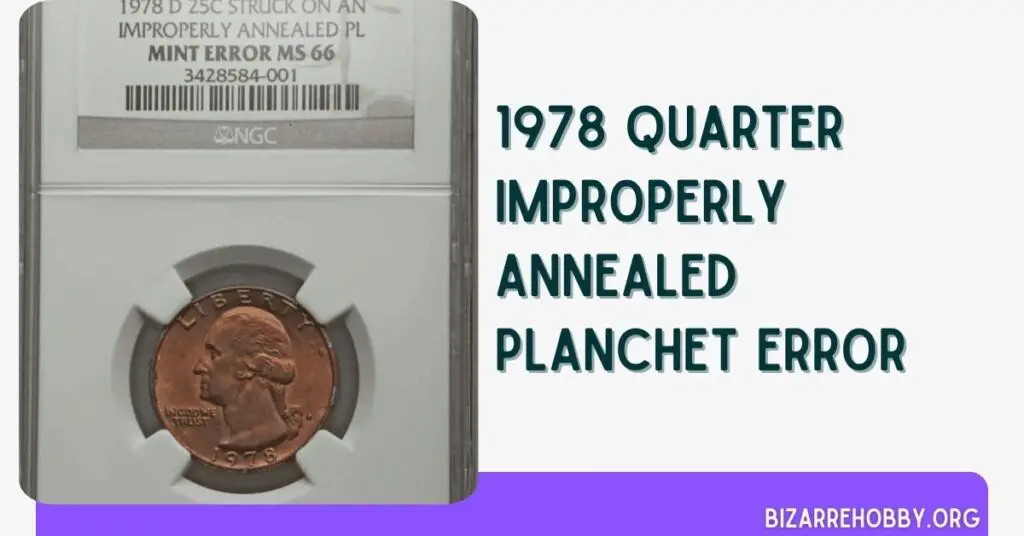
This error occurs during the annealing process, where the planchet is heated improperly and then inadequately cooled, causing copper molecules to break through the surface, giving the coin a reddish-orange tone. These coins are visually distinctive and can attract collectors, with values typically around:
- Improperly Annealed Planchet: Approximately $100
These errors not only make the coins unique but also significantly increase their value, making them highly sought after by collectors. If you come across a 1978 Washington Quarter with any of these errors, it could be worth much more than its face value.
What to Look for in 1978 Quarter Coin?
When examining a 1978 Washington Quarter, there are several key factors to consider, especially if you’re interested in identifying valuable coins. Here’s what to look for:
1. Mint Mark
- Philadelphia (No Mint Mark): Coins without a mint mark were produced in Philadelphia.
- Denver (D Mint Mark): Coins with a “D” mint mark were struck in Denver.
- San Francisco (S Mint Mark): Proof coins with an “S” mint mark were made in San Francisco. These coins were not intended for circulation and typically have a higher value, especially in high grades.
2. Coin Condition
- Circulated vs. Uncirculated: Coins that have been in circulation typically show signs of wear, while uncirculated coins retain their original mint luster and detail.
- Grade: The Sheldon scale, ranging from 1 (poor) to 70 (perfect), is used to grade the condition of a coin. Higher-grade coins, such as MS 65 or above, are more valuable.
- Proof Coins: Look for proof coins that have mirror-like surfaces and sharp details. Proofs from San Francisco are particularly collectible.
3. Errors and Varieties
- Off-Center Strikes: Check for coins where the design is not perfectly centered. The more off-center the strike, the more valuable the coin can be.
- Double Strikes: Look for coins that appear to have been struck twice, which can create overlapping images. A rotated double strike, where the coin was slightly rotated between strikes, is even more valuable.
- Wrong Planchet: This error occurs when the quarter was struck on a planchet intended for another denomination, such as a dime or nickel. These coins often have unusual weights and may show incomplete designs.
- Improperly Annealed Planchet: Coins with a reddish or orange hue might have been improperly annealed, making them rare and collectible.
4. Die Characteristics
- Sharpness of Detail: Check the sharpness of George Washington’s portrait and the eagle on the reverse. Worn dies can result in less detailed images, which are less desirable.
- Lettering and Date: Examine the clarity of the lettering and date. Any doubling or unusual spacing in the letters could indicate a valuable error.
5. Historical and Market Value
- Historical Significance: Consider the coin’s history. The Washington Quarter has been a staple of U.S. currency since 1932, and certain years or mint marks may have historical significance that adds value.
- Recent Sales: Check recent auction results or coin value guides to get an idea of what similar coins have sold for. This can help you gauge the potential market value of your 1978 quarter.
By carefully examining these aspects, you can determine whether a 1978 Washington Quarter is just a regular coin or a valuable collector’s item.
Where to Sell Your 1978 Washington Quarter?
Now that you have an idea of your coin’s value, you may be looking to sell it online. There are several platforms available for selling coins, each with its own pros and cons. Be sure to read our dedicated guide to find the best place to sell your 1978 Washington Quarter.
Which 1978 Washington Quarters are worth a lot of money?
- 1978 MS 67+ quarter: Sold for $2,875 in 2021
- 1978 D MS 67+ quarter: Sold for $1,528 in 2016
- 1978 S PR 70 DCAM quarter: Sold for $472 in 2003
FAQs on 1978 Quarter Value
What makes a 1978 Washington Quarter coin rare?
The 1978 quarters are modern coins that are still in use, making them relatively common and inexpensive. However, quarters with specific errors can be valuable to collectors.
How much are the 1978 Washington Quarters from Philadelphia worth?
The value of the 1978 No Mint mark quarter from Philadelphia is not exceptionally high. Uncirculated specimens can be bought for their face value, while even those in MS 65 grade are worth barely a dollar.
What are the priciest Washington quarters?
The most expensive Washington quarter is a 1932 D MS 66, which sold for $143,750 at auction in 2008. Other valuable quarters include the 1932 S MS 66 ($45,500 in 2020) and the 1949 D MS 68 ($43,475 in 2019).
Final Thoughts
The 1978 Washington Quarter, though common in circulation, holds a unique appeal for collectors due to its variety of intriguing errors. Whether you’re a seasoned numismatist or a curious enthusiast, understanding the value of these errors can add a new dimension to your coin collection.
From off-center strikes to wrong planchets, these rare variations tell a story of the minting process and offer a glimpse into the quirks of coin production. If you’re lucky enough to find one of these error coins, it could be worth far more than just 25 cents. What’s your favorite error to look out for? Let us know in the comments!
